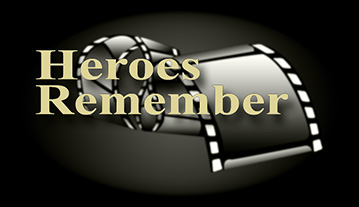Rhubarb Missions
Heroes Remember
Rhubarb Missions
During this period of 1943 when your squadron was involved in
sweeps over enemy occupied France and low countries, tell me,
Mr. Sager, what does the expression "Rhubarb" mean to you?
Oh, where did you hear that, Rhubarb? There were several types
of them. There were Roadstead, there's a, a, a Sweep,
there's a Circus. A Rhubarb was a low, a low flying one or
two man entry intervention over enemy territory. A Rhubarb
was normally carried out in bad weather, where you had
sufficient ceiling only to, to, to be able to see the ground
and where, and normally you would attack trains, or military
vehicles, or factories, or if you, if you found one, an
aircraft on an aerodrome. I've been on a number of Rhubarbs
and they're, they were really dangerous. They were really,
the losses were greater than what we gained. COs allowed their
pilots who were becoming restless and wanted action, they would
permit them to go on a well planned Rhubarb. But as I say, I,
I was determined, at one time in ‘43, ‘43, November ‘43, I had
moved from Kenley to 416 squadron under Chad Chadburn. Have you
ever heard of Chad Chadburn, the Wing Commander? Well that was
his wing. I persuaded Chad to let me take four pilots into the
Zider Zee, we were then in a, in Lincoln, Holland was just
across the North Sea, where the German two-engined fighter
bombers were being trained. They were, they were attacking the
coast, coastal shipping, in the Atlantic, the North Sea, with
guns, with cannons, and with torpedos. They did their
training, we heard from Intelligence, in the Zider Zee,
and so I thought, "Well when the weather's bad we could,
it's not that far, we'll take, we'll go in and we'll catch them,
unknown, they, they won't expect Spitfires to be in the area and
we'll shoot a whole lot of them down," stupid idea. But anyway,
I persuaded Chad that, to let me go. He insisted that I take
another four and they should be at the, at an aerodrome on our
coast, to come up if I needed help. Well I, the, the
navigation was very important, it went across the North Sea at
wave top level and the winds changed, you don't know exactly
what the wind is, and I had a silhouette map, a long map which
showed the towers, churches all along the coast, the area I was
headed for, and I knew exactly where we should hit the coast.
The, the information we had from Intelligence about the location
of German guns was, turned out to be wrong, because there were
guns everywhere along the coast. So when we went speeding across
Holland after, just a few minutes I, my aircraft was hit, 20
millimetre cannon shot, got hit by aircraft, blew, exploded
behind the armour plating, and I hadn't any radio, I had, I had,
the motor continued but I didn't have, I had very few instruments
no compass, and so I waved to my number two to take over,
thinking he would. But he, I didn't know how badly I was shot
up and he and the other three saw these big holes in my aircraft
and they thought well I wouldn't, I wouldn't, I'd never get back
home so they wouldn't go on, they wanted to lead me back home.
So I tied myself along with Danny Noonan, who took over and, but
they expected that I'd be, they reported that we were
coming back home and they'd got the others flight out to, to, to
alert the air sea rescue when they saw that I was bailing out
or, I didn't. I got across, I got back to the air, airfield.
That's a Rhubarb. That was a stupid Rhubarb because we could
all have been shot down, really. We might have done some damage,
but it wouldn't have been worth it to lose four aircraft and shot
down a couple of bombers but we had no idea that the whole Dutch
coast at that time in November ‘43, they were expecting
the invasion. They didn't know, but there were a lot of evidence
pointing to the Dutch coast as being the area where the, the
landing would take place. So the whole coast line was, was just a
mass of guns everywhere, there was no, there was no clear
channel that I had planned.
Related Videos
- Date modified:



